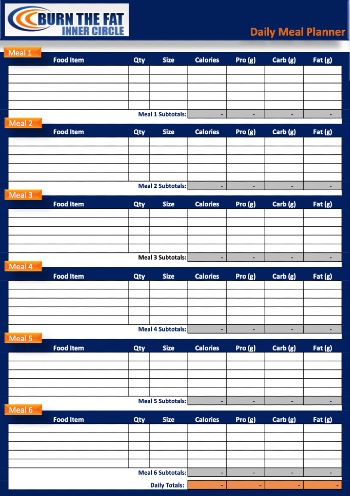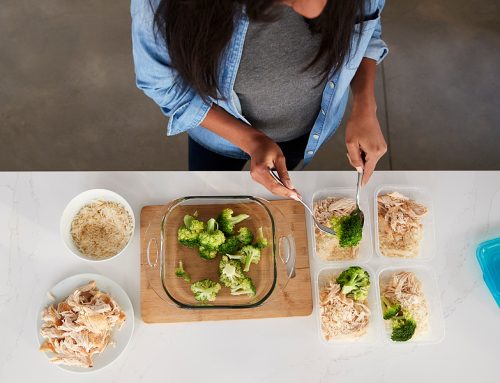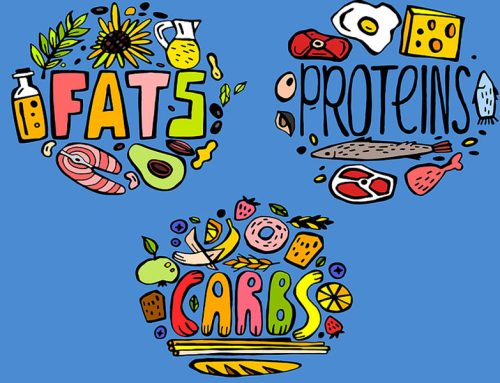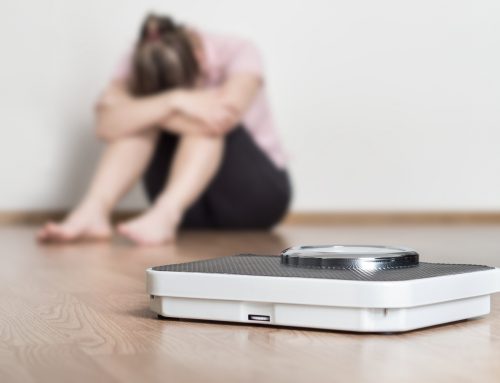Many people track their food intake with apps, software or old-fashioned paper and pen. That’s a good thing because tracking portions, calories, and macros has many benefits. But most people don’t realize that meal planning and food tracking are not the same thing. I’d like to make the case that meal planning is even better than macro tracking, especially when you have a meal planning template and you’re flexible in your approach.
In this post, you’ll get a free meal planning template for fat loss. You’ll also learn the difference between meal planning and macro tracking. It’s a simple and logical distinction, and it’s the difference between being proactive and reactive.

I could fill an entire book with details on meal planning for fat loss. In fact, I have! (Click here for my new meal planning for fat loss book). Meal planning is an art and a science deserving that much attention.
But today, I’d like to briefly introduce you to the topic by contrasting the 2 different methods, meal planning and tracking, explaining the benefits of them both and the difference between the two…
Method 1: The daily meal plan (spreadsheet)
This is a method I’ve used for years. In the old days, I created a daily meal plan template on a spreadsheet such as Microsoft Excel. These days, I do it with online software.
The grid has spaces (cells) for food name, quantity, protein, carbs, fat and calories. It also has rows divided out into the number of meals I want to eat.
The spreadsheet or software uses the “Atwater factors” to account for the energy content of protein, carbs and fat:
Protein = 4 calories per gram.
Carbs = 4 calories per gram.
Fat = 9 calories per gram.
I also use the sheet’s built-in math functions to add up meal subtotals and daily totals. Along with the daily totals, the macronutrient ratios for the entire day are also tabulated.
Why would you bother to create daily meal plans by the numbers like this?
It’s a proven fact that people who guess at their calorie intake are not only almost always wrong, they miss by a country mile! One study showed that even registered dieticians couldn’t estimate their calorie intake with more than 85% accuracy when they only guessed and didn’t have a tool or method to track their numbers.
The odds are overwhelmingly against you getting your nutrition right if you don’t have a plan, by the numbers, in writing – on paper (or electronically).
Success is not just about having goals. Success is about having a goal and having a PLAN to achieve your goal… and then beginning at once to take action on your plan.
If your goal is improving fitness or body composition – half of the plan is the workout – the other part is the meal plan.
Millions of people stumble into each day with no plan for what they’re going to eat… they “wing it”
Maybe it’s in their head what they intend to eat, but vague ideas give no real direction, and good intentions… well you know what they say about where that road leads.
The fact is, people without a plan usually eat whatever is convenient, available and accessible.
Method 2: Macro Tracking (Food app or diary)
The second method is macro tracking. We used to call it the food journal or diet diary method. These days almost everyone does it electronically using a mobile app.
Macro tracking is where you eat something, and then enter it into an app (or the old fashioned way, write it down). Tracking your food intake this way has many benefits.
For example, the moment you start tracking and writing down food intake, you have created self-accountability. The simple act of writing down what you eat – by itself – can change your behavior. What gets measured and tracked gets improved.
Writing down what you eat is also another way to be sure you’re eating the correct amount of calories and macronutrients for each day. As long as you have a calorie and macronutrient goal for the day, if you’re tracking your food intake in real time, you can adjust your food intake based on how many calories you have left for the day.
That’s how many people use nutrition apps today – as an electronic food journal. They may not have a pre-made meal plan, but they do know their calorie and macro goal for the day. After each meal, they log in the food from their smartphone and they can see how close they are to their targets as the day goes on.
Tracking macros or keeping a food journal can provide a great learning experience. Nothing will teach you about nutrition like tracking food, calories and macronutrients for an extended period of time. It’s like taking a nutrition class – except you come away with street-level learning, not just book learning.
Just like you go through school for a period of time at least once in your life, I consider tracking food intake an almost mandatory experience to go through at least once in your life for at least 4-12 weeks. Otherwise, you go through life uneducated.
Some people make macro tracking a habit and it becomes a part of their lifestyle. Others find it a chore to track food forever, so they only do it in the beginning, the first time they pursue a body transformation. After that, they fall back on habit-based eating or instinctive/mindful eating.
If you tracked macros for a while, then stopped, you can always come back to it in the future. That’s a good idea if you find yourself slipping back or if you have an important new goal where it’s ideal to proceed with more precision.
The Difference Between Tracking And Meal Planning For Fat Loss
Now, let me finish this lesson by pointing out a vital difference between these two strategies…
Most people don’t understand the vital distinction that macro tracking is a totally different method than creating a meal plan in advance.
You can count me as a supporter of macro tracking. But I also believe that meal planning, where you have a meal plan in hand before you start your day is even better.
Meal planning, where you create a whole day of meals on paper in advance, is a PROACTIVE strategy: You decide beforehand what you’re going to eat, and then you eat it.
Food tracking is a REACTIVE strategy: You eat something and then you write it down.
Tracking food intake with a food journal is not the same thing as meal planning and in many cases, tracking alone is not sufficient.
Eating completely at random and then writing down your haphazard day of random eating is tracking, but it’s not a very good strategy is it? The better strategy is to have a well-thought-out plan created in advance, before you take action.
That’s why I believe that whether you track macros every day or not, having at least one good meal plan on paper is a great strategy. You don’t have to create a new meal plan every morning for every new day or create a whole week’s worth of meal plans every Sunday night for the week ahead. You can, but it’s not required.
You’re only one meal plan away from a leaner and healthier body.
If you create one meal plan, you can think of it as a template (with a standard meal frequency and meal times and a template for putting together individual meals). As with macro tracking, you also have a target for total daily calories, protein, carbs and fat.
Then you can follow this “master meal plan” template and easily exchange individual foods or entire meals if you want the variety. If you don’t care about a lot of variety you can eat mostly the same thing every day (which is one of the best-kept secrets of easy fat loss). Many people eat mostly the same thing in the morning and afternoon and simply rotate diners and that’s enough variety for them.
“Have a plan. Follow the plan, and you’ll be surprised how successful you can be. Most people don’t have a plan. That’s why it’s easy to beat most folks.” – Paul ‘Bear’ Bryant, football coach, University of Alabama
In upcoming newsletters and articles, I’ll write more about some of the best methods for creating individual meals and how to put those meals together into daily meal plans. I’ll even share some of my favorite recipes with you, to spice up your meal variety.
If you’d like to learn a lot more about how to succeed with meal planning for fat loss, then you’ll want to read the new ebook, “The Burn the Fat, Feed the Muscle Guide to Flexible Meal Planning. It’s available for instant download now at www.BurnTheFat.com
Also, before signing off, I’d also like to show you how the online technology can make creating meal plans in minutes a snap:
It’s called Burn the Fat Meal Planner, and if you’re a Burn the Fat inner circle member, it comes with your membership and you can log in right now and start making custom meal plans. By the way, that is the ONLY way to go with meal plans. Following a generic meal plan or someone else’s meal plan has got to be the worst strategy ever.
Almost every criticism I’ve ever heard about using meal plans revolves around the error of following cookie-cutter generic meal plans. On the other hand, creating your own customized daily meal plan is one of the most powerful and effective strategies on Earth.
CLICK HERE For The Burn the Fat Meal Planner online software (members only)
Here are some of the cool things you can do with Burn the Fat Meal Planner:
1. Create and save your own customized meals.
2. Create and save your own customized daily meal plans.
3. Create and save customized recipes.
4. Mark foods as favorites.
5. Mark meals as favorites.
6. Mark recipes as favorites.
7. Add your own “custom” foods into the data base.
8. Mix and match all your custom meals and recipes to to create unlimited personalized daily meal plans.
9. Get food ideas from Burn the Fat approved foods and download them into your own personal meals.
10. Get meal ideas from Burn the Fat approved meals and download them into your own daily meal plans.
11. Get recipe ideas from Burn the Fat approved recipes and download them into your own daily meal plans.
12. Modify Burn the Fat approved recipes (change, remove, or add ingredients), and save them as your own custom recipes.
13. Import complete pre-made Burn the Fat approved meal plans into your own day’s spreadsheet
Plus a LOT more.
This is an amazing tool, designed specifically for proactive meal planning. In this case, the meal planning template is online and completely electronic.
But don’t forget, you can always create meal plans with a good, old-fashioned spreadsheet. You can download our pre-formatted meal planning template spreadsheets below.
Free meal plan template for weight loss:
CLICK HERE For The Burn the Fat Meal Planner Spreadsheet – Excel version (Free)
CLICK HERE For The Burn the Fat Meal Planner Spreadsheet – PDF printable version (Free)
CLICK HERE For The Burn the Fat Meal Planner online software (members only)
Until next time,
Train hard and expect success!
Tom Venuto,
Author of Burn the Fat, Feed the Muscle (BFFM) – The Bible Of Fat Loss
Author of The BFFM Guide To Flexible Meal Planning For Fat Loss
Founder, Burn the Fat Inner Circle

Tom Venuto is a natural bodybuilding and fat loss expert. He is a former competitive bodybuilder and today works as a full-time fitness coach, writer, blogger, and author. In his spare time, he is an avid outdoor enthusiast and backpacker. His book, Burn The Fat, Feed The Muscle is an international bestseller, first as an ebook and now as a hardcover and audiobook. The Body Fat Solution, Tom’s book about emotional eating and long-term weight maintenance, was an Oprah Magazine and Men’s Fitness Magazine pick. Tom is also the founder of Burn The Fat Inner Circle – a fitness support community with over 55,000 members worldwide since 2006. Click here to learn more about Burn the fat Inner Circle





“Success is not just about having goals. Success is about having a goal and having a PLAN to achieve it… and then beginning at once to take action on your plan”
So true.
I can see you have done your homework, this is an excellent article.
Thanks Tom.
Carlos, Always great to hear from you. I hope you are well and training hard in “the wooden gym!”
It was my bodybuilding mentors that taught me this – always work off a daily meal plan (have an eating goal for the day)… they didn’t teach this in school.
Thanks and have a great one!
Tom Venuto
I love meal planning, as it make shopping and preparing my daily food go so much smoother, instead of a “crap shoot” ~ especially with a family of 4, 2 of which are high schoolers in athletics. Do you have a software or andriod/kindle friendly app you could recommend to make my meal planning easier than the “pen & paper” method? I have not gotten to the point of tracking the macro-nutrients of each meal and it would be great to be able to do that electronically (because getting out the Calorie King book just takes that much more time).
Yes! no “crap-shooting!”
We built the Burn the Fat Meal planner for our members:
http://www.burnthefatinnercircle.com/
I do all my meal planning there.
I used to use microsoft EXCEL sheets for years and it worked like a charm. You simply have to input the formulas using the Atwater factors I mentioned in the article above, and as you mentioned, you have to look up in a calorie book for the food values which takes more time. electronically the spreadsheet and data base are joined together for quick meal building
For meal planning the options are somewhat limited, which is why i had our developers build our own software.
For meal tracking on while mobile, the choices are endless. I think my fitness pal came out on the top of a list last time we did a survey of our readers and members – the most common reason cited was the extensive data base.
But, it seems everyone has their own personal preference. Id love to hear from some other people what they are using these days, as i do notice new apps coming out practically every month.
Would be nice if you’d post the spreadsheet so we can download it.
Ann — the EXCEL sheet? The download link is at the BOTTOM of the web page / blog post/. The online meal planning software (burn the fat meal planner), that one is only available in the members-only area at http://www.burnthefatinnercircle.com
I totally see your point, Tom. There is a huge difference. By simply KNOWING what you will eat, ahead of time…trumps food journaling or intake tracking, by a long shot. Advance planning works, simply because a plan often meters portions accordingly. The margin of potential error is low, unlike tracking – which portions can easily go off the charts. Many food trackers will get the tendency to minimize this discrepancy and log only what they “feel” they SHOULD have consumed.
Not only that – planned meals takes much effort to prepare, store and shop for. Winging it every day, looks to be a complete cop-out compared to it. It’s a way of life many busy Americans will not commit to.
Hi Tom. Great article because it reinforces my own ethos. Any chance of creating an Excel meal planner in metric ie kilojoules as opposed to calories for those of your loyal followers that operate this way?
Hi Tom,
Thanks for the blog post. I understand you are trying to force good behaviour here, but there is a middle ground between Planning and Tracking which I use successfully. I’m talking about average people like myself who want to loose some weight and maintain a good balance of body fat, muscle and overall fitness. Serious bodybuilders and fitness enthusiasts looking to get ripped or bulk up are of course different.
I’ve tried many times to plan meals and follow a meal plan. For me this only works for a limited time, like 4-5 weeks. I’ve found that keeping to a plan becomes an obsession and you spend half your evenings planning next days/weeks meals and stuff instead of spending time with kids etc. It becomes impractical and you feel can’t go out and eat with co-workers because the restaurant might not have the food your plan says, etc.
What I’ve done pretty successfully over the last 18 weeks – inspired by the Body Fat Solution and your blog posts – (loosing about 7 kgs) is to set a calorie goal, in my case 1800 cal/day to slowly loose about 0.3-0.4 kg/week. I use an iPhone app, Easy Diet Diary, which is made for the Australian market. It is easy to enter meals you eat, scan barcodes from packets, etc. This helps me track calories, fat, sodium, protein, etc.
Every week I transfer the daily data to a homemade spreadsheet to analyse how close to the target I got and the actual weight lost.
After a few weeks you learn what you can/can’t eat per day to achieve your goal and what foods make you go over your weekly average fat, sodium, etc target (I don’t want to go over the RDI) or under your protein target. This makes it quite easy to live a normal life and just choose foods that work.
By using common sense and knowledge what foods provide what benefits (lean meat, low fat cottage cheese is good for protein, commercial bread is bad for sodium, etc) you can pretty much balance your day to achieve the goal, and still be flexible what you eat (have a 6 inch turkey sub at Subway for lunch, etc). In a sense I still plan for the day in my mind, but not as ridged as a meal plan. I know if I have my oats for breakfast, the small Subway for lunch, and fruit/cottage cheese snacks during the day, I’ll have enough calories “left” to eat whatever the rest of the family is having for dinner (abit smaller portion than I’d otherwise have) and maybe a glass or two of wine.
I am fully aware that if I set a target to, for example, grow more muscle or increase the ratio of fat loss vs muscle loss, I’d need to plan better to eat more protein etc, but this tracking and half-planning allows me to maintain a steady weight loss without feeling confined by a diet meal plan. The only three things I need are a calorie & nutrition tracking app, a $5 portable scale to weigh food (sometimes), and common sense what to and not to eat.
Hi Magnus. Sounds you like you found just the perfect balance between tracking and planning… which was part of my message. the other part of my message was that tracking alone, if you have absolutely no plan, you simply go into your day with no idea what youre going to eat, may not always end well.
There are benefits to tracking AND meal planning. I like both. The great thing about meal planning is that if you work from a pre-made meal plan, you dont have to, nor are you supposed to follow it 100% all the time. you can enjoy foods out at restaurants when you like and make substitutions as often as you like. Not rigid, and certainly never an obsession – only an eating goal or target for the day; one that IS flexible.
best part: you are the one who gets to create your plan; you dont have to follow someone elses.. and you can change it when you want to if you are the “get bored easily” type. And you know, within a couple months you can already have new habits established by following a meal plan so even if you stop doing it that early, you’ve already reaped many benefits. I typically recommend working off a meal plan (and or macro tracking) for a period of at least 8-12 weeks. After that, for many people, its second-nature.
keep up the great work!
Tom, where do you get your meal planner spreadsheet from?
Mike just click on the links at the bottom of this post for the excel sheet. Its a fee download right in this blog page For our meal planner software, that is provided for our members -only at http://www.burnthefatinnercircle.com
Cheers,
Tom V
Tom, I couldn’t agree more. I’ve even had this same conversation with a client last week who thinks the Nutrition Complete meal planner program I provide my clients with is too time consuming – and it creates meal plans automatically! We have this conversation almost every week, she just seems bound and determined to do her own thing and not use her meal planning software:(
Thanks for sharing this blog post, it helps a lot.